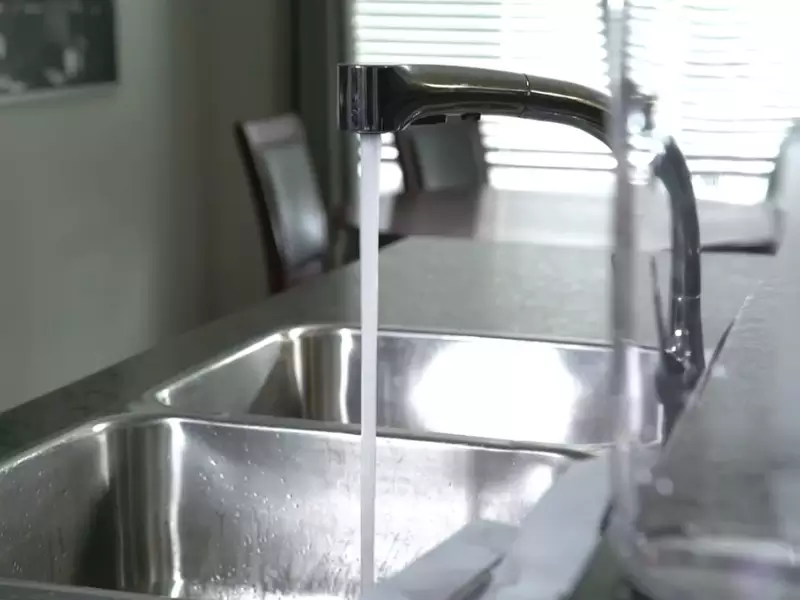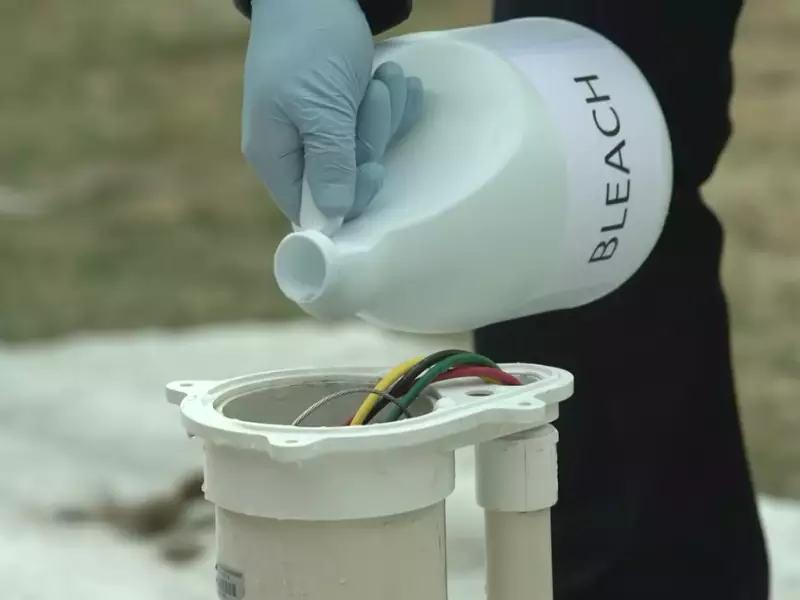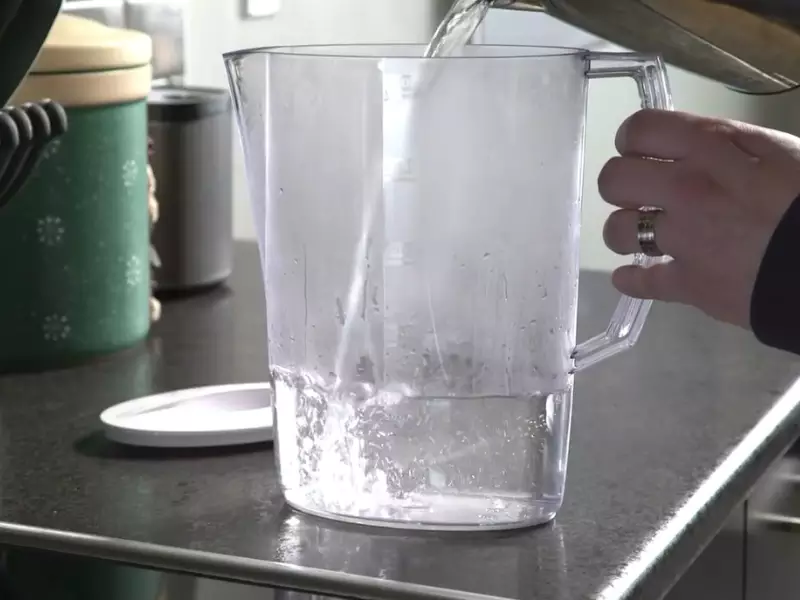Clean drinking water is paramount to our health and well-being. The reliability and purity of well water, though abundant in some regions, can be questionable. The contamination level varies, but some harmful impurities often find their way into well sources.
Well water, though a natural source, is not always fit for direct consumption. It requires purification to ensure it is free from harmful contaminants and safe to drink.
Wells are natural reservoirs tapped into the ground. They access water tables and provide an essential resource. However, as water travels through rocks and soil, it picks up impurities that make purification necessary before consumption.
Well Water Contaminants
Tapping into the earth’s natural water reservoirs, wells are a primary source of water for many. While they offer numerous benefits, especially in remote areas without access to municipal water, the water they yield isn’t always pristine. Let’s delve deeper into the various contaminants that might lurk in well water and their potential health risks.

Common Impurities in Well Water
Water, as it flows through underground rocks and soil, can absorb various impurities. Here are some of the most prevalent:
Minerals
- Calcium and Magnesium: Responsible for water hardness, these minerals are generally harmless and may even be beneficial for health in moderate amounts. However, excessive hardness can lead to scale build-up in pipes and appliances.
- Iron and Manganese: These can stain laundry and fixtures and impart an undesirable taste to the water.
- Fluoride: Naturally found in some well water, excessive fluoride can lead to dental and skeletal fluorosis.
Microorganisms
Microbial contamination is a primary concern for well owners.
- Bacteria: Some like E. coli indicate fecal contamination, posing significant health risks.
- Viruses: While less common than bacteria, they can be more challenging to eliminate.
- Parasites: Protozoa such as Giardia can cause gastrointestinal illnesses.
Chemicals
Resulting from human activities, many chemicals can infiltrate groundwater.
- Pesticides and Herbicides: Agriculture can lead to these chemicals seeping into groundwater. They pose various health risks, from hormonal disruptions to cancer.
- Industrial By-products: Chemicals from factories can end up contaminating well water, especially if the industrial setup doesn’t follow proper disposal methods.
- Petroleum Products: Gasoline, oil, and other products can contaminate water sources through spills or leaks.
Metals
Often a result of natural processes, some metals in well water can be harmful.
- Lead: Usually enters drinking water when pipes corrode. It can have severe health effects, especially in children.
- Arsenic: A potent carcinogen, found in varying amounts in groundwater across the world. Long-term exposure can lead to various health problems.
Health Risks Associated with Contaminated Water
Contaminated water isn’t just about an unpleasant taste or odor. It carries with it significant health implications.
Gastrointestinal Issues
Many microorganisms in well water can lead to conditions like diarrhea, nausea, or stomach cramps. Children, the elderly, and those with compromised immune systems are particularly vulnerable.
Neurological Disorders
Certain chemicals and metals, like lead, can have adverse effects on the nervous system. In children, this can manifest as developmental delays and learning difficulties.
Skin Problems
Impurities in water can exacerbate skin conditions like eczema or lead to new issues due to allergic reactions.
Long-Term Health Risks
Consistent consumption of contaminated water can lead to chronic health problems, including certain types of cancers, especially when contaminants like arsenic are involved.

Boiling
Boiling is often the go-to method for many, especially in emergency situations or temporary settings without access to advanced filtration systems.
The Science Behind Boiling
When you boil water, the heat kills off many pathogens. But the boiling point of water (100°C or 212°F) is lower than many chemical contaminants, meaning they can remain even after boiling.
Pros and Cons
- Pros:
- Effective against most microbial threats.
- No need for specialized equipment.
- Can be done anywhere, making it suitable for travel or camping.
- Cons:
- Inefficient for large quantities.
- Some pathogens like certain protozoan cysts might survive.
- Chemical contaminants remain.
- Energy consumption can be high, especially if boiling for extended periods.
Duration for Effective Purification
The time required to eliminate pathogens varies. For maximum safety, bringing water to a rolling boil and maintaining it for at least one minute is standard advice. At higher altitudes, where boiling points are lower, extending this to three minutes is recommended.
Filtration Systems
Technological advancements have given rise to various filtration systems, each tailored to remove specific impurities.
Different Types of Filters
Activated Carbon Filters
Comprising carbon granules or blocks, they attract and trap many contaminants. They are especially effective against organic compounds, chlorine, and improve taste and odor. Over time, however, they can become saturated and need regular replacement.
Reverse Osmosis Systems
One of the most thorough methods, it forces water through a semi-permeable membrane. This process effectively removes a vast array of contaminants, including heavy metals, salts, and some chemicals. However, it also removes essential minerals and can be slower than other filtration methods.
Ceramic Filters
Utilizing the microscopic pores of ceramic material, these filters are good at trapping bacteria and sediments. Often, they’re paired with activated carbon to offer broader protection.
Benefits of Each System
- Carbon Filters: Quick, improves taste, and cost-effective.
- Reverse Osmosis: Comprehensive filtration but requires more space and regular maintenance.
- Ceramic Filters: Long-lasting, can be cleaned and reused multiple times.
Distillation Process
While it may seem old-school, distillation remains one of the most reliable purification methods.
Basics of Distillation
In essence, it’s a two-step process. Water is boiled to produce vapor, which is then cooled and condensed back into a liquid form in a separate chamber. As contaminants have different boiling points than water, they’re left behind.
Equipment Needed
The basic apparatus consists of a boiling chamber, a cooling system (often coils), and a collection chamber. While there are advanced commercial systems available, a basic setup can be created at home with some effort.

Advantages and Limitations
- Advantages:
- Very effective against a wide range of contaminants.
- Produces high purity water.
- Limitations:
- Slow, especially for large quantities.
- Can be energy-intensive.
- Some volatile organic compounds (VOCs) with boiling points lower than water might remain.
Ultraviolet (UV) Light
UV purification has been gaining traction due to its efficiency and ease of use.
How UV Purification Works
When exposed to UV light of a specific intensity and wavelength, the DNA of microorganisms gets damaged, rendering them harmless. It’s an effective method to ensure water is microbiologically safe.
UV Systems for Home Use
There are various UV systems designed for home use. They’re often integrated into a larger purification system that includes pre-filters to remove sediments and other impurities that might shield microorganisms from UV exposure.
Safety Measures and Effectiveness
Consistent power is crucial. A drop in intensity can reduce effectiveness. Also, the UV bulb’s quality degrades over time, so regular replacement is vital. UV purification doesn’t alter the taste or remove chemical contaminants.
Chemical Disinfection
Often seen in emergency kits and travel packs, chemical disinfectants offer a portable solution to water purification.
Chlorine vs. Iodine
- Chlorine: Widely used in municipal water treatment, it’s effective against many pathogens. However, it can produce harmful by-products and impart a chlorine taste.
- Iodine: While effective, its use is limited due to potential thyroid issues with prolonged consumption.
Safe Usage Guidelines
Following dosage instructions is crucial. Overdosing can pose health risks, while under-dosing might not effectively purify the water. After adding the disinfectant, allowing the water to sit for the recommended contact time ensures maximum effectiveness.
Potential Taste Concerns and Neutralizing Agents
Chemical disinfectants can alter water’s taste. Using neutralizing agents, like vitamin C tablets post-disinfection, can help improve flavor.
Maintaining Well Water Quality
While purification methods are essential, maintaining the quality of well water at the source is equally vital.
Regular Testing and Why It’s Essential
Routine tests can detect issues before they become significant health concerns. By understanding what contaminants are present, you can select the best purification method tailored to your needs.
Simple Steps to Protect Well Sources
Ensuring the area around the well is free from potential contamination sources is crucial.
- Well Cap: A tight-fitting, vermin-proof cap prevents contaminants from entering.
- Maintain a Safe Distance: Activities that can contaminate groundwater, like pesticide application or waste disposal, should be done far from the well.
- Routine Inspection: Periodically inspecting the well’s physical structure for cracks or damages can prevent many potential issues.
Frequently Asked Questions
How Often Should I Test My Well Water?
At least once a year, especially after heavy rainfall or flooding events.
Is Boiling Enough for Chemical Contamination?
No, boiling primarily kills pathogens. To remove chemicals, consider filtration or distillation.
Which Purification Method is Best for My Home?
It depends on the contaminants present in your water. Regular testing can guide the best purification method.
Conclusion
Well water provides countless households with a necessary resource. However, the journey from well to glass involves essential purification steps.
Different methods offer varied effectiveness levels. Selection largely depends on the type of impurities you’re dealing with.
Ensuring the purity of our drinking water safeguards our health. With today’s advanced techniques, achieving this has never been easier.